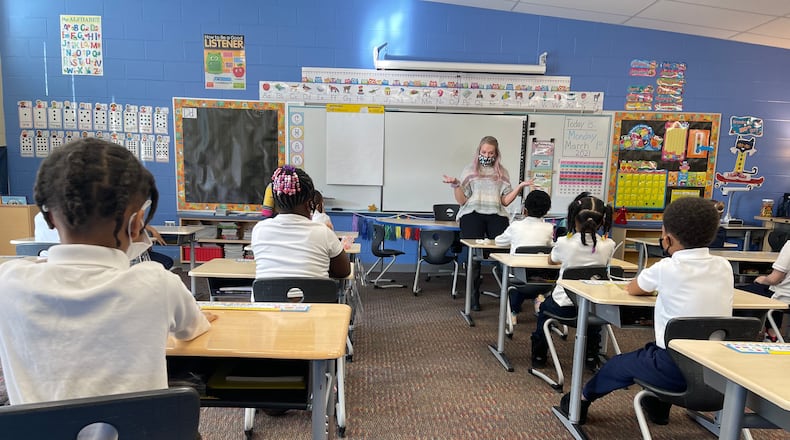But Ohio Department of Education officials said Wednesday that allocations will be based on Title 1 funding formulas — like other federal relief funds in the past year — so school districts serving higher percentages of low-income students will get comparatively larger allocations.
ODE also will “work with the legislature to add appropriations as needed,” spokeswoman Mandy Minick said.
A statement Wednesday from USDOE listed seven potential uses for the money, along with “additional uses allowed in the statute.”
The seven listed are:
- COVID safety investments such as building ventilation projects, personal protective equipment and “obtaining additional space” to ensure social distancing in classrooms;
- Hiring additional nurses and custodial staff, to bolster school safety efforts;
- Avoiding layoffs and/or hiring more educators to address learning loss and help with social distancing;
- Programs to meet students’ social, emotional, mental health, and academic needs.
- Summer, after-school, and other extended learning and enrichment programs.
- Wi-Fi hotspots and computer devices for students and educators
- Efforts to enable social distancing and safety protocols on buses.
Ohio’s state Superintendent, Paolo DeMaria, said in addition to school reopening efforts, the Ohio Department of Education expects the money “will play a significant role” in schools’ efforts to make up for lost learning opportunities and help students be ready for the new school year.
“Schools and districts will have several years to use these funds, so they can also contribute to fundamental changes to education that can create even greater improvement and outcomes for students and our state,” DeMaria said.
The money is part of $122 billion that will be distributed nationally, with USDOE saying states will start to receive some of the money this month. Ohio is the seventh most-populous state and will get the seventh-largest allocation. California will receive over $15 billion, while Vermont is lowest at $285 million.
“These funds from the American Rescue Plan and the extraordinary steps the (USDOE) is taking to get these resources to states quickly will allow schools to invest in mitigation strategies to get students back in the classroom and stay there, and address the many impacts this pandemic has had on students,” said U.S. Secretary of Education Miguel Cardona.
Cardona encouraged states to make sure students who have been hit hardest by COVID-19 are provided with needed resources.
There are two other funding streams for K-12 schools in the American Rescue Plan. The U.S. Department of Health and Human Services announced that the CDC will provide $10 billion nationally to support COVID-19 screening testing for K-12 teachers, staff, and students in schools.
The plan also includes a $7.6 billion fund specifically earmarked for special education, homeless students, non-public schools, Tribal educational agencies, and areas such as Guam, and American Samoa.
About the Author

